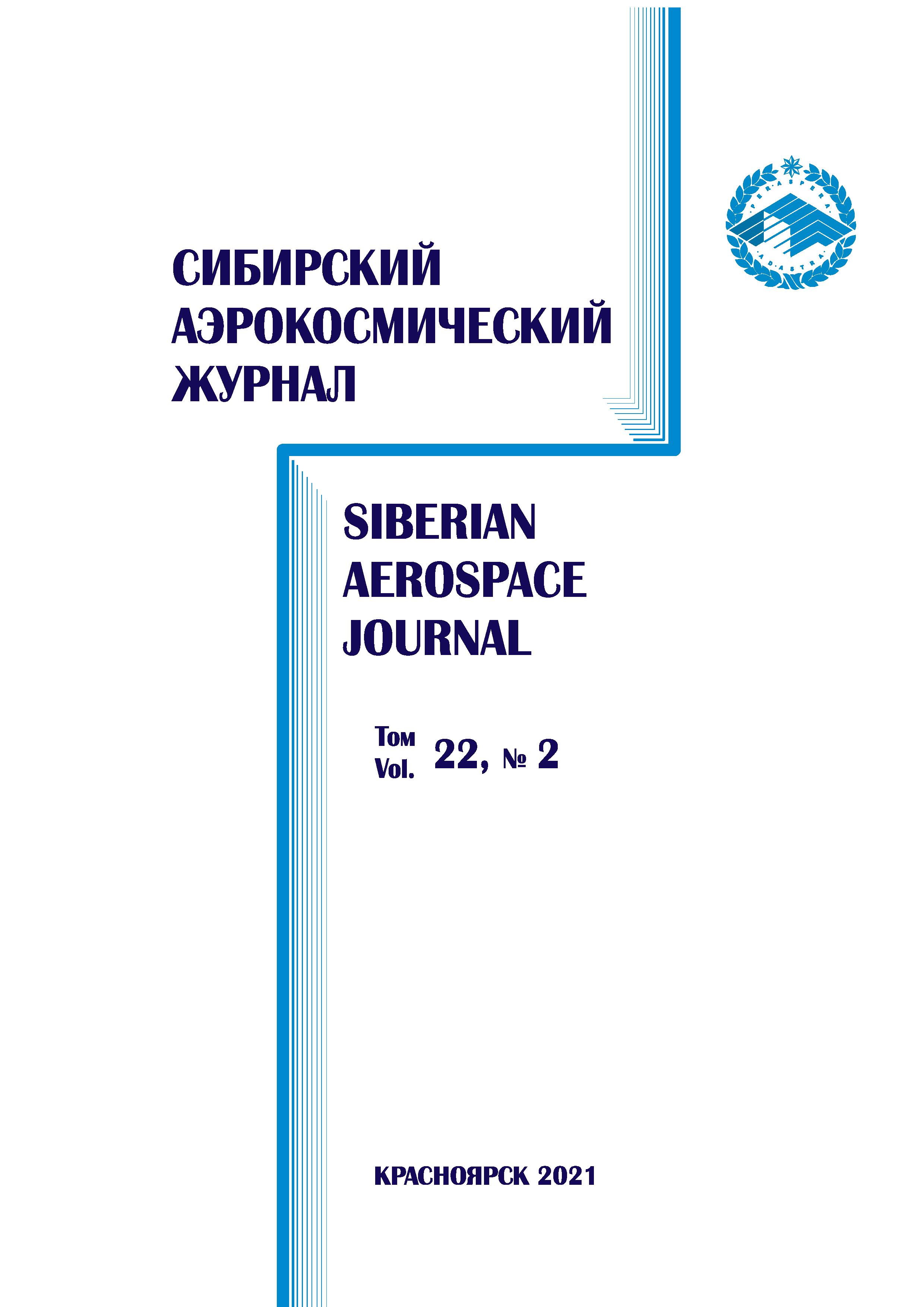Optimization the position of the spacecraft instrument panel mounting points based on modal analysis
- Authors: Kolga V.V.1, Lykum A.I.1, Marchuk M.E.1, Filipson G.Y.1
-
Affiliations:
- Reshetnev Siberian State University of Science and Technology
- Issue: Vol 22, No 2 (2021)
- Pages: 328-338
- Section: Section 2. Aviation and Space Technology
- Published: 23.06.2021
- URL: https://journals.eco-vector.com/2712-8970/article/view/562883
- DOI: https://doi.org/10.31772/2712-8970-2021-22-2-328-338
- ID: 562883
Cite item
Abstract
The paper presents the optimization of the location of the interface points of the spacecraft instrument panel using modal analysis, as well as a quasi-static calculation of the panel under study, confirming the effectiveness of the proposed changes in the panel design. The instrument panel is a three-layer honeycomb structure consisting of two aluminum plates and a honeycomb filler. Cellular panels have a number of advantages: a small weight of the structure, high rigidity, specific strength. Using finite element modeling, the range of natural frequencies and vibration patterns of the instrument panel was determined, which made it
possible to determine the optimal location of the panel attachment points to the spacecraft body to increase the lower limit of the natural frequency range and increase its carrying capacity.
Keywords
About the authors
Vadim V. Kolga
Reshetnev Siberian State University of Science and Technology
Author for correspondence.
Email: kolgavv@yandex.ru
Dr. Sc., Cand. Sc., professor, Professor of Department of Aircraft
Russian Federation, 31, Krasnoyarskii rabochii prospekt, Krasnoyarsk, 660037Andrey I. Lykum
Reshetnev Siberian State University of Science and Technology
Email: rob4i@mail.ru
fifth-year student
Russian Federation, 31, Krasnoyarskii rabochii prospekt, Krasnoyarsk, 660037Maxim E. Marchuk
Reshetnev Siberian State University of Science and Technology
Email: mmarchuk98@mail.ru
fifth-year student
Russian Federation, 31, Krasnoyarskii rabochii prospekt, Krasnoyarsk, 660037Gleb Y. Filipson
Reshetnev Siberian State University of Science and Technology
Email: gortsev2014@gmail.com
fifth-year student
Russian Federation, 31, Krasnoyarskii rabochii prospekt, Krasnoyarsk, 660037References
- Daneev A. V., Rusanov M. V., Sizykh V. N. [Conceptual schemes of dynamics and computer modeling of spatial motion of large structures] Sovremennyye tekhnologii. Sistemnyy analiz. Modelirovaniye, 2016, No. 4, P. 17–25 (In Russ.).
- Kolga V. V., Yarkov I. S., Yarkova E. A. Development of the heat panel of the small space apparatus for navigation support. Siberian journal of science and technology. 2020, Vol. 21, No. 3, 382– 388. doi: 10.31772/2587-6066-2020-21-3-382-388.
- Testoyedov N. A., Kolga V. V., Semenova L. A. Proyektirovaniye i konstruirovaniye ballisticheskikh raket i raket nositeley [Design and construction of ballistic missiles and launch vehicles]. Krasnoyarsk, 2014, 308 p.
- Zamyatin D. A., Kolga V. V. [Construction of anisogrid power structure of the spacecraft adapter] Мaterialy XХII Mezhdunar. nauch. konf. “Reshetnevskie chteniya” [Materials XХII Intern. Scientific. Conf “Reshetnev reading”]. Krasnoyarsk, 2019, P. 26–28 (In Russ.).
- Vasiliev V. V., Barynin V. A., Rasin A. F., Petrokovskii S. A., Khalimanovich V. I. Anisogrid composite lattice structures – development and space applications. Composites and Nanostructures. 2009, Vol. 3, P. 38–50.
- Lopatin A. V., Morozov E. V., Shatov A. V. Axial deformability of the composite lattice cylindrical shell under compressive loading: Application to a load-carrying spacecraft tubular body. Composite Structures. 2016, Vol. 146, P. 201–206.
- Gaidachuk V. E., Kirichenko V. V., Kondratyev A. V. [Conceptual approach to the formation of physical and mechanical characteristics of sandwich structures of composite structures of rocket and space technology] Otkrytyye informatsionnyye i komp'yuternyye integrirovannyye tekhnologii. 2014, P. 27–36 (In Russ.).
- Rychkov S. P. Modelirovaniye konstruktsiy v srede Femap with NX Nastran [Modeling of structures in the Femap with NX Nastran environment]. Moscow, DMK Press Publ., 2013, 784 p.
- Shimkovich D. G. Femap & Nastran. Inzhenernyy analiz metodom konechnykh elemen-tov [Femap & Nastran. Engineering analysis by the finite element method]. Moscow, DMK Press Publ., 2012, 702 p.
- MSC Nastran. User’s guide: MSC. – Siemens Product Lifecycle Management Software Corporation; 2014. P. 886. Available at: https://docs.plm.automation.siemens.com/data_services/ resources/nxnastran/10/help/en_US/tdocExt/pdf/User.pdf.
- Timoshenko S. P. Kolebaniya v inzhenernom dele [Oscillations in engineering]. Moscow, NAUKA, 1957, 444 p. (In Russ.).
- Biderman V. L. Teoriya mekhanicheskikh kolebaniy [Theory of mechanical vibrations]. Moscow, Vysshaya shkola Publ., 1980, 408 p.
- Lopatin A. V., Morozov E. V. Fundamental frequency of an orthotropic rectangular plate with an internal centre point support. Composite Structures. 2011, Vol. 93, P. 2487–2495.
- Lopatin A. V., Morozov E. V. Fundamental frequency of an orthotropic rectangular plate with an internal centre point support. Composite Structures. 2011, Vol. 93, P. 2487–2495.
- Malmeyster A. K., Tamuzh V. P., Teters G. A. Soprotivleniye polimernykh i kompozitnykh materialov [Resistance of polymer and composite materials]. Riga, Zinatne Publ., 1980, 572 p.
Supplementary files










